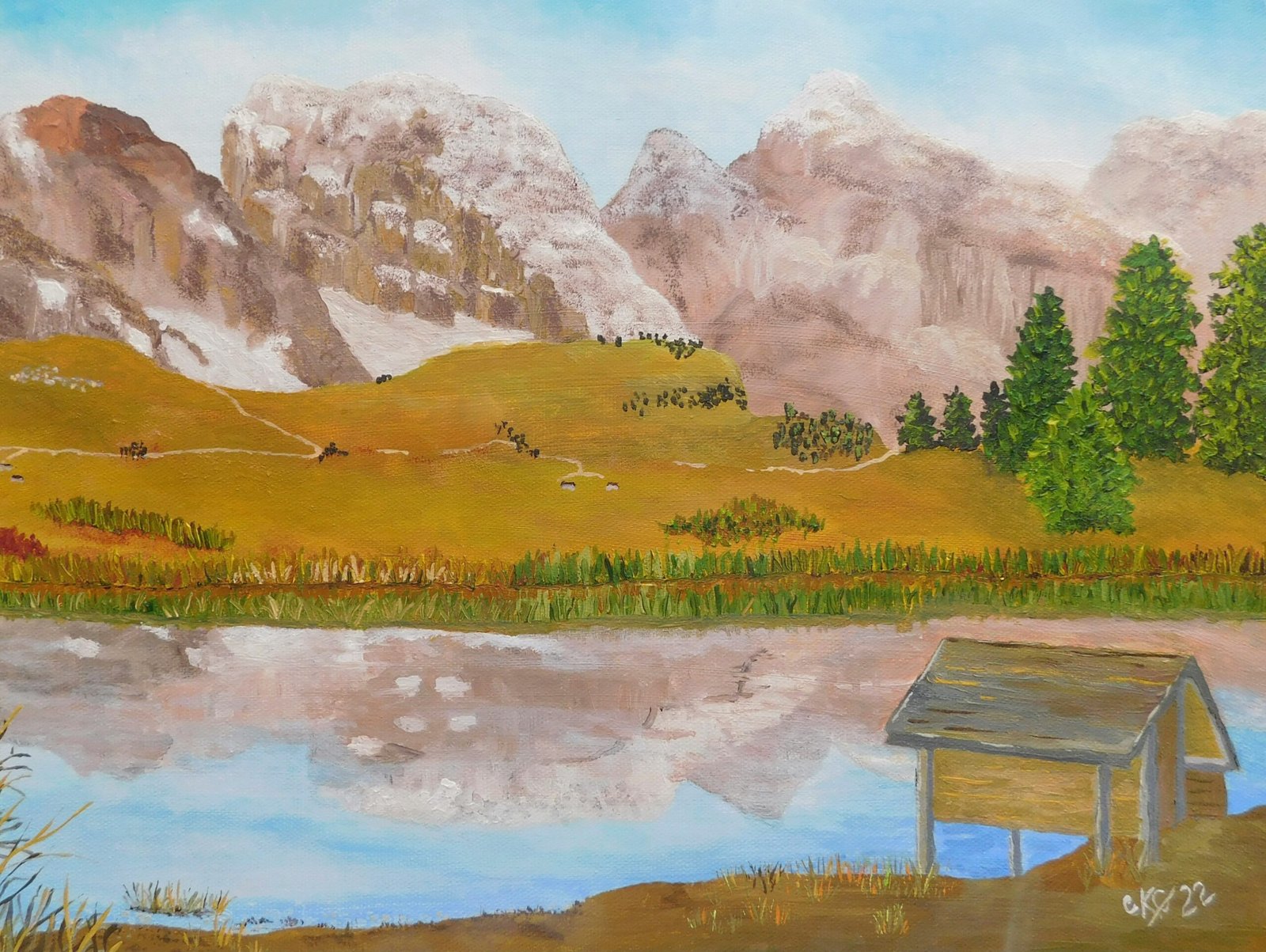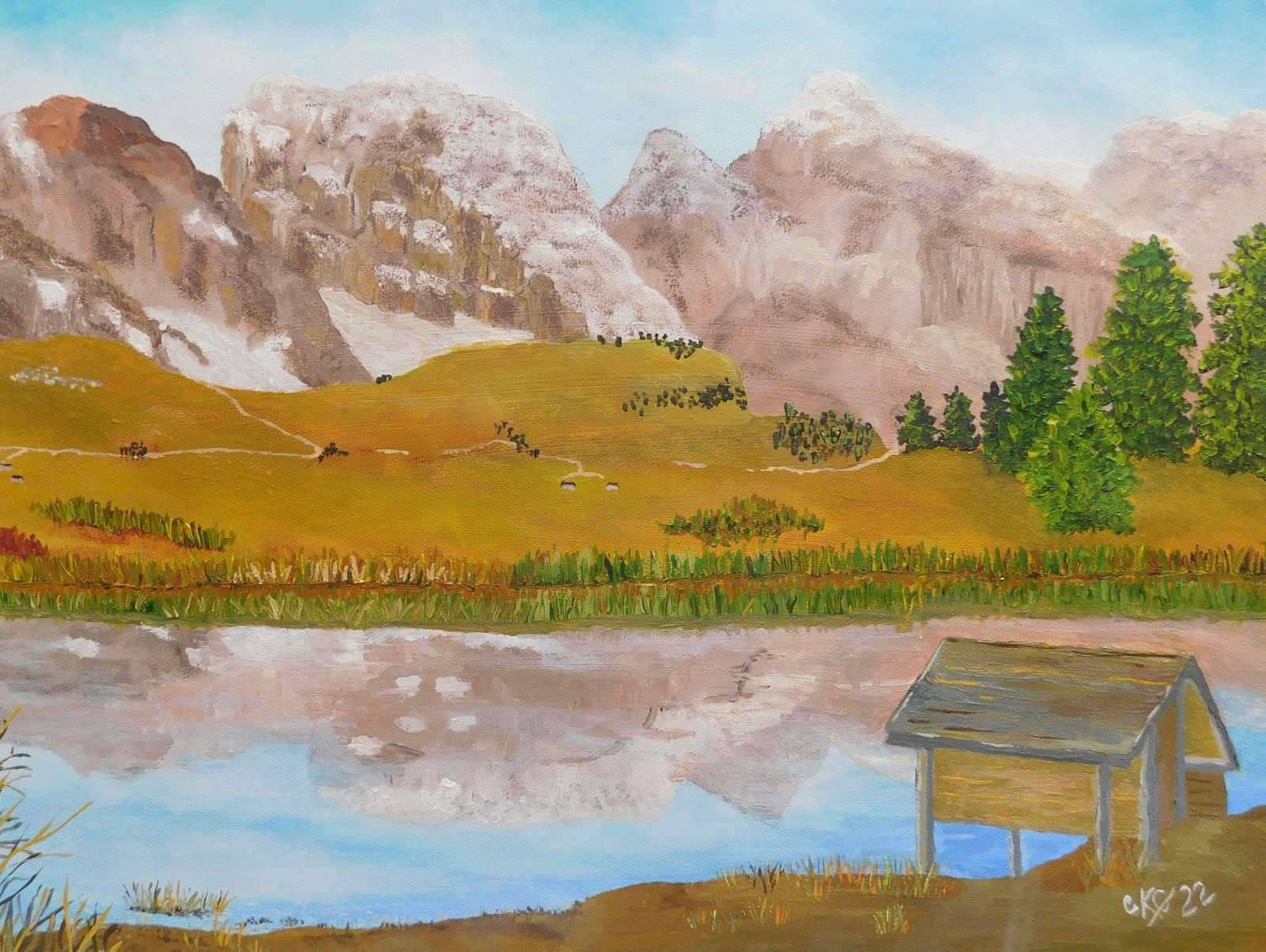
Introduction to Cultural Artistic Expressions
Artistic expressions serve as profound reflections of the cultural, societal, and historical contexts from which they emerge. Each culture’s artistic output is a unique testament to its identity, encapsulating the values, beliefs, and traditions that define its people. The diversity in artistic forms across different societies underscores the boundless creativity inherent in human expression, revealing the manifold ways in which communities understand and interact with the world around them.
In many cultures, art is more than just a form of aesthetic pleasure; it is a vital mode of communication and a repository of collective memory. Artistic expressions—be they in the form of visual arts, music, dance, or literature—function as vehicles for conveying complex narratives about a society’s history, religion, and social norms. For instance, Indigenous Australian rock paintings, which date back thousands of years, are not merely decorative but serve as sacred records of ancestral stories and spiritual beliefs. Similarly, the intricate patterns of Islamic calligraphy reflect both the aesthetic and devotional aspects of the culture, emphasizing the importance of the written word in spiritual practice.
The purpose of art in different cultures often varies, yet it consistently mirrors societal values and experiences. In some cultures, art celebrates and reinforces communal bonds, as seen in the vibrant festivals and collective performances of African tribal communities. In others, it acts as a means of individual expression and social commentary, exemplified by the works of contemporary Western artists who challenge societal norms and provoke critical thought.
As we delve into the distinctiveness of artistic expressions across cultures, it becomes clear that art is a universal language that transcends boundaries while simultaneously celebrating the uniqueness of each culture. This exploration not only enhances our appreciation of global artistic diversity but also fosters a deeper understanding of the shared human experience. Through this lens, we can better appreciate how art serves as a bridge connecting us to the rich tapestries of traditions, beliefs, and values that define different societies.
The Role of History and Geography in Shaping Art
The development of artistic styles and traditions within different cultures is profoundly influenced by historical events and geographical settings. These factors contribute significantly to the uniqueness and distinctiveness of cultural art forms across the globe. History and geography serve as the canvases upon which the story of human creativity is painted, shaping the evolution of artistic expressions in myriad ways.
In Europe, the Renaissance period marked a time of extraordinary artistic achievement. Catalyzed by a renewed interest in the classical knowledge of ancient Greece and Rome, Renaissance art reflected significant shifts in human thought, emphasizing realism, perspective, and human anatomy. This era produced legendary artists such as Leonardo da Vinci and Michelangelo, whose works epitomize the Renaissance’s impact on European art. The geographical spread of Renaissance ideas from Italy to other parts of Europe further diversified artistic expressions, integrating local styles and techniques.
In East Asia, natural landscapes have played a pivotal role in the development of artistic traditions. Chinese ink wash painting, for example, often emphasizes the beauty and spirituality of natural scenes, reflecting the philosophical and aesthetic principles of Taoism and Buddhism. The mountainous landscapes of Japan have similarly inspired ukiyo-e woodblock prints, characterized by their intricate depictions of nature and everyday life. The geographical features of East Asia have thus fostered a deep connection between art and the natural world, influencing the region’s distinctive artistic heritage.
Indigenous art forms are particularly shaped by their environments, reflecting the intimate relationship between indigenous communities and their natural surroundings. Aboriginal art in Australia, for instance, uses dot painting and symbolic imagery to convey stories, traditions, and connections to the land. The geographical isolation and unique ecosystems of Australia have nurtured an artistic tradition that is both deeply rooted in the environment and distinct from other global art forms.
Historical contexts and geographical features are integral to the development of cultural art forms. They provide the essential backdrop against which artistic traditions evolve, lending each culture’s artistic expressions their unique character and significance. The interplay between history, geography, and art continues to shape the rich tapestry of human creativity, offering a window into the diverse ways in which cultures interpret and represent their world.
Symbolism and Themes in Cultural Artworks
Art serves as a profound medium for cultural expression, often reflecting the beliefs, values, and traditions of a society. Symbolism and themes in cultural artworks are pivotal in understanding the diverse narratives and messages conveyed by different communities. Across the globe, various cultures employ art to narrate stories, express religious or spiritual beliefs, and communicate societal values.
In Native American art, animals hold significant symbolic meanings. For instance, the eagle is revered as a sacred bird representing power, vision, and spiritual connection. Similarly, the bear symbolizes strength, courage, and leadership. These animal motifs are not mere decorative elements but are deeply embedded in the cultural mythology and spiritual practices of Native American tribes.
African art, on the other hand, often uses color symbolism to convey messages. Colors such as red, black, white, and gold have specific interpretations. Red is commonly associated with life and vitality, black with the unknown or the spiritual realm, white with purity and peace, and gold with wealth and high status. These colors are strategically used in masks, textiles, and body art to communicate social status, spiritual beliefs, and community values.
In Hindu and Buddhist art, the representation of deities is rich with symbolic elements. Hindu deities like Vishnu, Shiva, and Lakshmi are depicted with multiple arms, each holding different objects symbolizing their divine attributes and powers. For example, Shiva’s trident represents his control over the physical, mental, and spiritual realms. Similarly, Buddhist art is replete with symbolic representations, such as the lotus flower, which signifies purity and enlightenment, and the wheel (Dharmachakra), representing the teachings of Buddha and the cycle of life.
These symbolic elements in cultural artworks are not only artistic expressions but also carry profound meanings that offer insights into the cultural and spiritual life of the people. By examining these symbols and themes, one can gain a deeper appreciation and understanding of the rich tapestry of human cultural expression.
Materials and Techniques Unique to Different Cultures
Artistic expression across cultures is profoundly influenced by the materials and techniques available to artists within their specific environments. This interplay between resource availability and traditional knowledge gives rise to unique artistic practices, each contributing to the distinctiveness of cultural art forms.
In Japan, the art of woodblock printing, or “ukiyo-e,” showcases a remarkable blend of precision and craftsmanship. This technique, dating back to the Edo period, involves carving intricate designs into wooden blocks, applying ink, and pressing the block onto paper. The use of natural pigments and specialized papers further exemplifies how indigenous resources shape artistic practices.
Similarly, Aboriginal dot painting from Australia is an iconic representation of the region’s cultural heritage. Artists use natural elements such as ochres, crushed rock, and plant extracts to create their paints. These materials are applied in meticulous dot patterns, often depicting stories and symbols that are integral to Aboriginal culture. The technique not only highlights the environmental resources but also the deep-rooted spiritual connections within the community.
African textiles, particularly those employing natural dyes, provide another vivid example of cultural distinctiveness in art. In regions across Africa, artists harness the colors derived from plants, minerals, and even insects to dye fabrics. Techniques such as resist-dyeing, where parts of the fabric are shielded to create complex patterns, and batik, a method using wax to resist dye, are reflective of the rich traditional knowledge passed down through generations.
The availability of local materials and the inherited wisdom of crafting techniques play pivotal roles in defining the artistic expressions of a culture. These elements ensure that the art remains not just a creative outlet but a testament to the community’s history, environment, and identity. Through understanding these diverse materials and methods, we gain a deeper appreciation for the distinctive artistic expressions that enrich our global cultural tapestry.
Cultural Exchange and the Evolution of Artistic Styles
The evolution of artistic styles and traditions has been significantly influenced by cultural exchange, a phenomenon driven by trade, migration, and colonization. These exchanges have not only facilitated the blending and transformation of various art forms but also enriched the diversity of artistic expressions globally.
One prominent example is the incorporation of Persian motifs in Indian Mughal art. The Mughal Empire, established in the early 16th century, saw a confluence of Persian, Indian, and Islamic artistic traditions. Persian artists were invited to the Mughal court, leading to a unique amalgamation where intricate Persian floral designs and calligraphy were seamlessly integrated into Indian miniature paintings and architectural decorations.
Similarly, the adoption of Western techniques in contemporary Chinese painting marks another significant instance of cultural exchange impacting artistic evolution. During the late 19th and early 20th centuries, Chinese artists began to study Western painting methods, such as perspective and chiaroscuro, integrating these techniques with traditional Chinese ink wash painting. This fusion has given rise to a distinctive style that marries the precision of Western realism with the fluidity and spontaneity of Chinese brushwork.
The Caribbean region presents a fascinating case of cultural and artistic fusion. As a nexus of African, European, and indigenous influences, Caribbean art showcases a vibrant blend of styles and traditions. The fusion of African rhythmic patterns and European classical forms is evident in Caribbean music and visual arts, creating a rich tapestry that reflects the region’s diverse heritage.
Overall, cultural exchange has played a pivotal role in the evolution of artistic styles, fostering an environment where diverse artistic traditions can intersect and flourish. Through trade, migration, and colonization, artists have been exposed to new ideas and techniques, leading to innovative expressions and a broader, more inclusive artistic landscape. These cross-cultural influences underscore the interconnectedness of human creativity and highlight the enduring impact of cultural exchange on the world of art.
The Role of Art in Preserving Cultural Heritage
Art serves as a vital medium for preserving and promoting cultural heritage. In the face of rapid modernization and globalization, traditional art forms often risk extinction. Communities and organizations worldwide are therefore taking concerted efforts to protect these invaluable cultural expressions. These initiatives are multifaceted, encompassing documentation, revival, and the establishment of cultural festivals and museums.
One significant strategy in preserving cultural heritage is the meticulous documentation of endangered art forms. This process involves recording the techniques, symbols, and narratives associated with these art forms. For example, the Smithsonian Institution has undertaken projects to document traditional Native American crafts, ensuring that these practices are not lost to future generations. Similarly, UNESCO’s Intangible Cultural Heritage lists serve as a global registry to safeguard and raise awareness about various cultural traditions.
Revival of traditional crafts is another crucial aspect of cultural preservation. In many parts of the world, artisans are being supported to continue their ancestral crafts, often through workshops and training programs. The Indian government’s initiative to revive handloom weaving is a case in point. By providing financial support and market access, these programs not only preserve the craft but also offer sustainable livelihoods to the artisans.
Cultural festivals and museums are also instrumental in maintaining artistic heritage. Events like the Bali Arts Festival in Indonesia and the Santa Fe Indian Market in the United States celebrate and showcase traditional art forms, drawing both local and international attention. These festivals offer a platform for artists to display their work, fostering appreciation and understanding among diverse audiences. Similarly, museums dedicated to cultural heritage, such as the Musée du Quai Branly in Paris, play a pivotal role in educating the public and preserving artifacts for posterity.
Maintaining artistic heritage is of paramount importance for future generations. It not only provides a sense of identity and continuity but also enriches our global tapestry of human creativity. By preserving traditional art forms, we ensure that the wisdom, skills, and stories of past generations remain alive and accessible, thereby fostering a richer, more diverse cultural landscape.
Contemporary Artistic Expressions and Globalization
Globalization has significantly impacted contemporary artistic expressions, fostering an environment where artists can easily blend traditional elements with modern techniques and themes. This fusion is evident in various global art movements and trends, reflecting the dynamic interplay between cultural heritage and contemporary innovation.
Street art, for instance, has become a global phenomenon, transcending its origins in urban environments to become a recognized form of contemporary artistic expression. Artists like Banksy from the United Kingdom and Os Gêmeos from Brazil have gained international acclaim, utilizing street art to convey powerful social and political messages. Their works incorporate traditional motifs from their respective cultures while employing modern techniques such as stenciling, spray painting, and large-scale murals.
Similarly, digital art has revolutionized the art world, offering artists new mediums and platforms for creation and dissemination. Digital artists like Beeple and Refik Anadol merge traditional artistic concepts with cutting-edge technology, producing works that challenge conventional boundaries. The rise of digital art has also led to the emergence of new art forms, such as NFTs (Non-Fungible Tokens), which have created unprecedented opportunities for artists to monetize their work globally.
Social media has further amplified the reach of contemporary artists, providing a platform for collaboration, promotion, and community building. Artists from diverse cultural backgrounds can now share their work with a global audience, fostering cross-cultural exchanges and collaborations. Platforms like Instagram and TikTok have become vital tools for artists to showcase their creations, engage with followers, and gain international recognition.
Navigating the balance between preserving cultural identity and embracing global influences remains a central challenge for contemporary artists. Many artists strive to maintain a connection to their cultural roots while incorporating global elements to create innovative and resonant works. This delicate equilibrium is evident in the works of artists like Yayoi Kusama, who integrates traditional Japanese motifs with modern, avant-garde techniques, and El Anatsui, who fuses traditional Ghanaian practices with contemporary art forms.
In conclusion, globalization has profoundly shaped contemporary artistic expressions, enabling artists to draw from a rich tapestry of cultural influences while pushing the boundaries of creativity. Through street art, digital art, and the use of social media, contemporary artists continue to navigate and redefine the complex interplay between cultural preservation and global innovation.
Conclusion: Celebrating the Diversity of Artistic Expressions
In our exploration of the distinctive artistic expressions across various cultures, we have journeyed through a rich tapestry of human creativity and innovation. From the vibrant tapestries of Middle Eastern craftsmanship to the intricate dance forms of Southeast Asia, the diversity of artistic expressions encapsulates the unique perspectives and histories of different societies. Each culture’s artistic heritage serves as a reflection of its values, beliefs, and experiences, offering a window into the soul of its people.
Understanding and respecting the diverse artistic expressions of different cultures enriches our global perspective. It allows us to appreciate the complexity and depth of human creativity, fostering mutual respect and admiration for the myriad ways in which art can manifest. By engaging with and exploring these varied art forms, we open ourselves to new experiences and insights, broadening our horizons and deepening our empathy.
Moreover, celebrating the diversity of artistic expressions encourages a more inclusive and interconnected world. It highlights the importance of cultural exchange and the sharing of creative ideas, which can lead to innovative collaborations and a more harmonious global community. By recognizing and valuing the unique contributions of each culture, we acknowledge the collective strength and beauty of our shared human heritage.
As we continue to navigate an increasingly interconnected world, it is imperative that we embrace and celebrate the richness of global artistic heritage. By doing so, we not only honor the creativity and ingenuity of different cultures but also inspire future generations to appreciate and preserve the diverse artistic traditions that have shaped our world. Let us continue to explore, engage with, and celebrate the fascinating distinctiveness of artistic expressions across cultures, enriching our lives and fostering a deeper appreciation for the beauty and complexity of human creativity.



